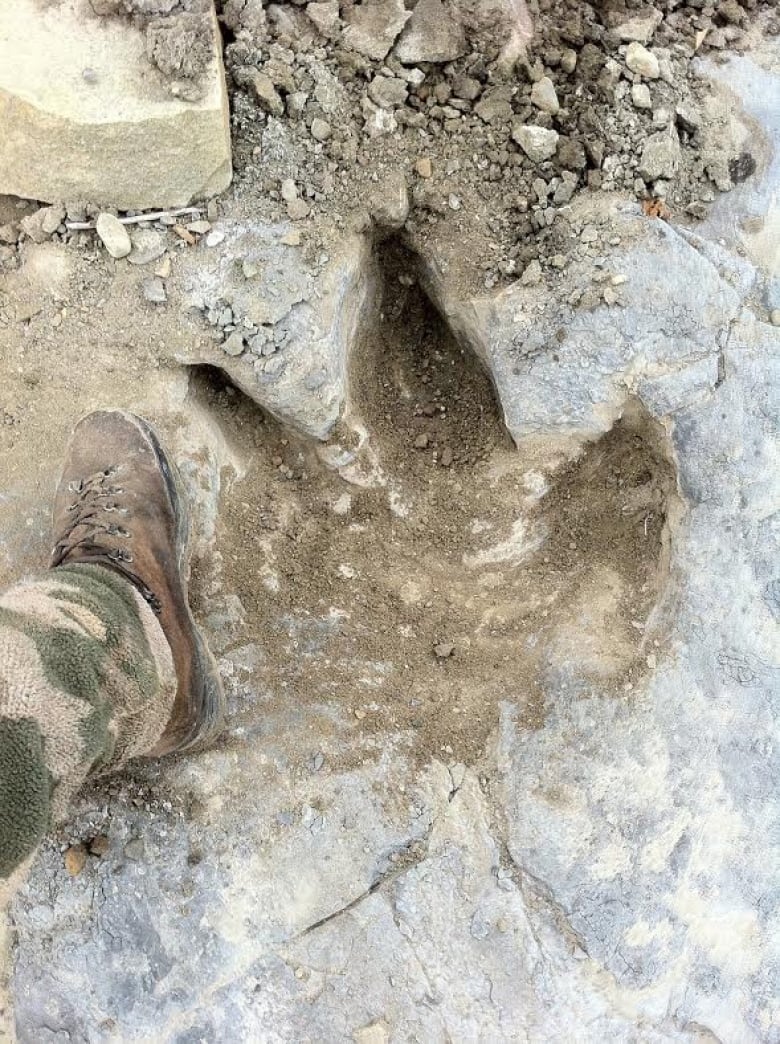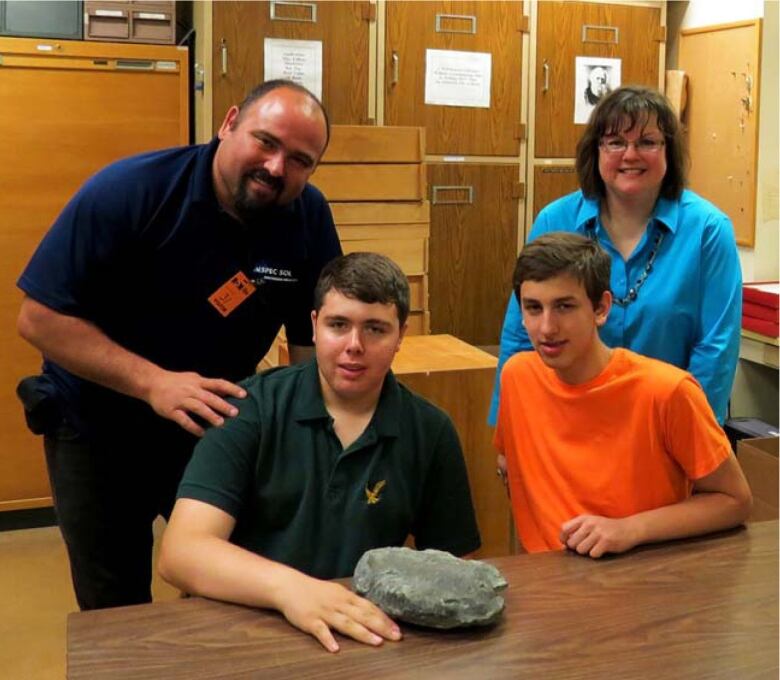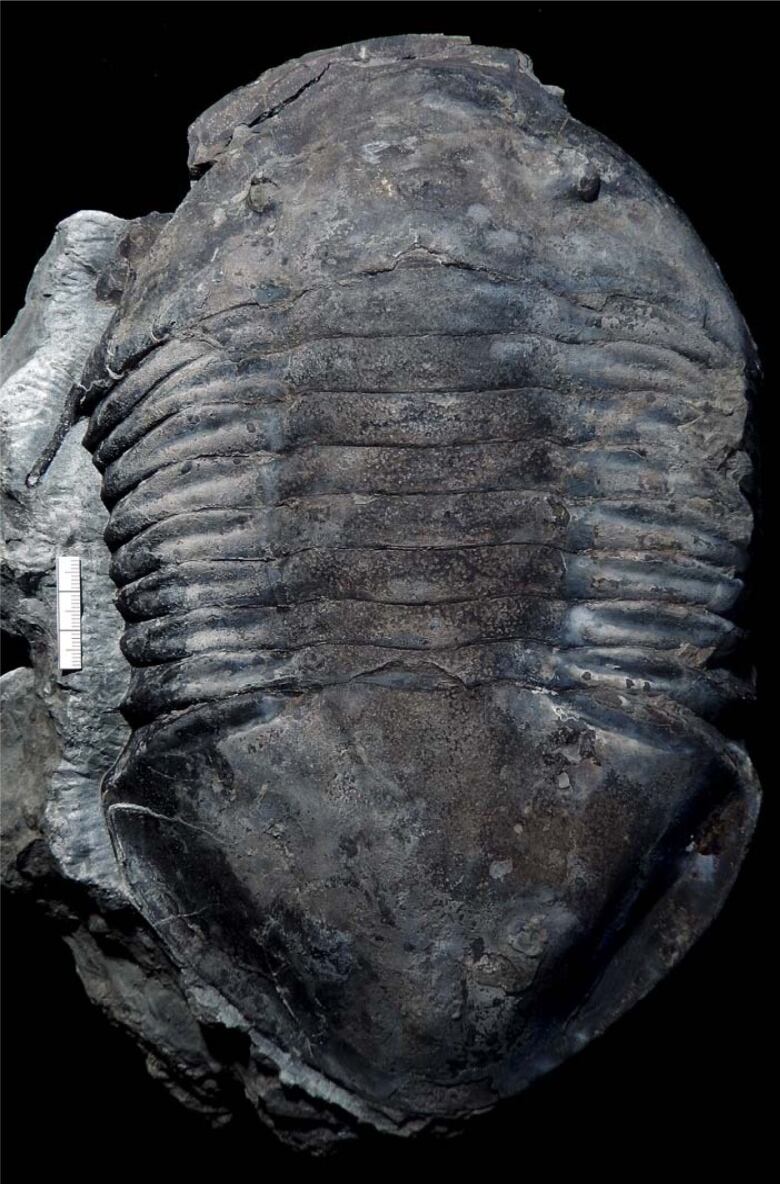Amazing fossils found by ordinary people thrill scientists
Public has access to places paleontologists can't cover, boosting chance of rare finds
A new species of flightless bird was found on a Vancouver Island beach by a young girl walking with her father and brother. A giant trilobite was discovered beside a Toronto creek by a couple of teenage boys. A new, ancient reptile was found by a 9-year-old boy in P.E.I.
Andjust last week, a new horned dinosaur found by a man in Montanawas confirmed as a new species that will go on display at the Canadian Museum of Nature.
Those are just some of the big fossil discoveries in recent years that were made by ordinary people, many of them very young and many of them Canadians.
Paleontologists say they're of huge importance to science. The bird, reptile and horned dinosaur discoveries were all new species that paleontologists were able to describe for the first time in scientific papers,while the trilobite was an extraordinary specimen that helpedconfirmsome of the unusual features of its species.
- New dinosaur finds soar in 'golden age' of discovery
- Want to discover a dinosaur? 5 tips for fossil hunters
A mammoth tooth found by a nine-year-old boy is one of the newest additions to the collection at the Peace Region Paleontology Research Centre in Tumbler Ridge, B.C.

Other recent finds include separate sets of tyrannosaur tracks discovered by a University of British Columbia student anda hunting guide, a mammoth tusk from a gravel quarry, a prehistoric dinosaur "highway" covered in tracks and 100-million-year-old scrape marks made by a crocodile-like animal that were discovered by groups of hikers.
In fact, it was the discovery of a dinosaurtrackway by two young boys, Mark Turner and Daniel Helm, in 2001 that led to the discovery of more tracks and fossils in the region and the creation of the centre in the first place, said Rich McCrea, the museum's curator.
He estimates that regular people doing outdoor activities have made at least 75 per cent of the discoveries that his museum has studied in recent years, and the museum can get a dozen to 20 reports in a year. Those are very important, he says.
"There's a lot of territory to cover," he said. "For a paleontologist, we like to find things as well, but we generally have limited resources."
Children make good fossil hunters
He says people who have found fossils that ended up in the museum's collections come from all walks of life and are of all ages, although many do seem to be children.
"I think it's because they're low to the ground and see these things better."
Children are also more likely to believe they've found a fossil and follow up. "Grownups tend to doubt themselves," says McCrea. "We don't want to be embarrassed. We don't want to ask what we think are stupid questions."
- Bizarre vegetarian T. rex cousin discovered by boy, 7
- Fossil found by P.E.I. boy fills gap in reptile evolution
- Girl, 8, discovers trilobite fossils in C.B.S.
Help from the public is particularly crucial for discovering rare specimenssuch as scorpions, says Dave Rudkin, assistant curator of invertebrate paleontology at the Royal Ontario Museum in Toronto.
Fewer than 15 fossil scorpions have ever been found in Ontario, all originally from the Bruce Peninsula. Some were spotted by quarry workers, some by people who bought the stone for landscaping projectsand one was found by a young fossil hunter in a quarry spoil heap.
"Having just one more of those is very, very important," Rudkin said. The recent discoveries allowed ROM researchers to publish new research last year describing the 430-million-year-old scorpions, the oldest in North America and some of the oldest in the world.

Trilobite highlight
Rudkin helps run bimonthly events at the ROM where anyone can bring in rocks, gems, minerals, fossils or meteorites for identification.
Three years ago, just as one of the sessions was wrapping up, a couple of teenage boys came in with a find that Rudkin describes as "a highlight for me."

It was an almost complete trilobite a type of marine arthropod that lived 500 million to 250 million years ago and it was enormous, nearly 30 centimetres long or larger than the diameter of a basketball.
"It was the best example of that kind of trilobite I've ever seen coming from the rocks here in Toronto," Rudkin said.
"This particular one that Ben and Bruno found is not crushed like most of them are."
It also had a large spine coming out from that back corner of its head that is rarely seen in fossils, as it tends to get broken off, Rudkin added."That's an interesting feature that we can now confirm."

The boys had found the fossil while wandering along the side of a creek in Toronto. They decided to donate the fossil to the ROMand it's now on display at the museum's preview gallery for its upcoming Dawn of Life exhibit.
People who work at industrial sites such as quarries and minesor who dig infrastructure like sewer tunnelssometimes find fossils that would otherwise be inaccessible.
City of Edmonton employee Aaron Krywiakfound a dinosaur tooth in a sewer tunnel in 2010 and workers at gravel pits in Saskatoon have found a mammoth tusk and a leg bone.
In othercases, property owners make a crucial contribution by flagging and providing access to fossil beds that couldn't otherwise be accessed.
Nine-year-old Michael Arsenault found the fossil of an ancient reptile older than the earliest dinosaurs at the beachfront of his family's P.E.I. cottage.
When nuclear physicist Bill Shipp bought a rural property in Montana, he went exploring and found a fossilof a new species of horned dinosaur sticking out of the ground on his land.

Victoria Markstrom, field and collection manager at the Canadian Fossil Discovery Centre in Morden, Man.,said the museum is often contacted by farmers asking if she can go over to their land and see what kind of fossils they have.
The public is also helpful for monitoring fossil beds over time.
"The landscape is always changing," she said. "Every year, because of snowstorms or rainstorms or something like that, layers of rocks keep on getting eroded. So just because it didn't produce fossils last year doesn't mean it won't this year."












_(720p).jpg)


 OFFICIAL HD MUSIC VIDEO.jpg)
.jpg)



























































































